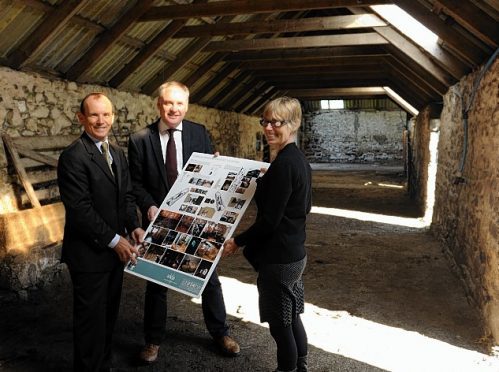The hidden role a tiny Moray community played in the birth of Scotland’s national drink will be uncovered as part of a multimillion-pound regeneration project.
Members of the Cabrach Trust have recruited two researchers to explore the “prehistory” of whisky as part of a scheme to breathe new life into the remote area.
The historians will focus on how illicit distilling paved the way for the creation of what is now a lifeblood industry for the Moray region worth billions of pounds to the Scottish economy.
The Cabrach Trust is aiming to transform a traditional farm near Inverharroch Castle into a distillery and heritage centre.
The findings of historians Gregor Adamson and Kieran German, who will begin the research scheme this month, will shape members’ plans to use ancient methods to produce whisky.
The pair will focus on the distilling techniques used at the Cabrach in the 18th and 19th centuries.
Mr German said: “This project will perform a vital role in securing the heritage of the whisky industry.
“The Cabrach is the perfect destination to tell the story of the origins and emergence of distilling in Scotland.”
Mr Adamson added: “Our research will help create a blueprint for the recreation of an early distillery at Inverharroch, and will underpin the heritage programme there.”
The Cabrach Trust unveiled proposals to adapt the steading into a distillery in September as part of a drive to bring more jobs and visitors to the sparsely populated area.
The organisation’s executive director, Sue Savege, said the new project’s findings would “directly influence” the venture.
She said: “Our early research points to Inverharroch as being the possible site of one of these early distilleries, which is very exciting for us.
“The Cabrach and its people played a very important role in the pre-history of whisky and the establishment of the industry in Speyside, and we are very keen to unravel this story.
“What we find out will be integral to our plans.”
It is hoped the historians will unearth information on how whisky was produced, stored, aged and transported centuries ago.
In the late 1700s and early 1800s, the Cabrach was a “legendary” haunt for the illegal production of the drink.
Locals created an underground network of secret stills in the hills, along with a distribution system designed to evade customs and excise officers.
In 1823, after several unsuccessful attempts by the government to end illicit distilling and smuggling, a new act of parliament ushered in the era of commercial distilling in 1823.
Licences were then issued for five new distilleries in the Cabrach – Lesmurdie, Cabrach, Tomnaven, Buck and Blackmiddens.
Last night, Moray MSP Richard Lochhead said that uncovering the “largely untold story” of the Cabrach’s role in the nation’s whisky heritage could put the neglected area back on the map.
Mr Lochhead said: “The Cabrach has a rich heritage and a largely untold story relating to the area’s colourful role in various chapters of Scottish history, especially whisky distilling.
“It is most welcome that more light will be shed on these fascinating issues.
“This research will surely highlight that the area was once a hive of activity and interesting characters.
“Bringing that story to current generations will help the Cabrach community build on its plans to regenerate.”
Architects AKA Ltd and interior designers Surface ID have drawn up plans to covert the existing steadings into the distillery and visitor centre.
The research work is due to be completed by March, and the planning application is expected to be submitted in the spring.
The estimated opening date for the distillery is 2018.
